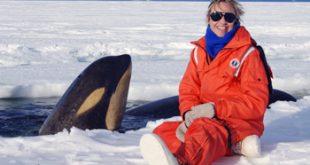Mời các bạn làm bài tập ôn luyện dạng bài Matching Information trong IELTS Reading. Bài tập này giúp các bạn ôn lại kỹ năng xử lý dạng bài Matching Information cũng như củng cố lượng từ vựng. Bài có tất cả 8 câu hỏi chọn đáp án đúng. Sau khi làm xong bài, các bạn hãy ấn submit để xem kết quả bài làm của mình và giải thích của từng câu hỏi. Bạn hãy thử làm để củng cố và nâng cao kiến thức để chuẩn bị cho bài thi IELTS Reading nhé!
Chúc bạn có thời gian hữu ích trên website!
The Columbian Exchange
 A Millions of years ago, continental drift carried the Old World and New World apart, splitting North and South America from Eurasia and Africa. That separation lasted so long that it fostered divergent evolution; for instance, the development of rattlesnakes on one side of the Atlantic and of vipers on the other. After 1492, human voyagers in part reversed this tendency. Their artificial re-establishment of connections through the commingling of Old and New World plants, animals, and bacteria, commonly known as the Columbian Exchange, is one of the more spectacular and significant ecological events of the past millennium.
A Millions of years ago, continental drift carried the Old World and New World apart, splitting North and South America from Eurasia and Africa. That separation lasted so long that it fostered divergent evolution; for instance, the development of rattlesnakes on one side of the Atlantic and of vipers on the other. After 1492, human voyagers in part reversed this tendency. Their artificial re-establishment of connections through the commingling of Old and New World plants, animals, and bacteria, commonly known as the Columbian Exchange, is one of the more spectacular and significant ecological events of the past millennium.
B When Europeans first touched the shores of the Americas, Old World crops such as wheat, barley, rice, and turnips had not travelled west across the Atlantic, and New World crops such as maize, white potatoes, sweet potatoes, and manioc had not travelled east to Europe. In the Americas, there were no horses, cattle, sheep, or goats, all animals of Old World origin. Except for the llama, alpaca, dog, a few fowl, and guinea pig, the New World had no equivalents to the domesticated animals associated with the Old World, nor did it have the pathogens associated with the Old World’s dense populations of humans and such associated creatures as chickens, cattle, black rats, and Aedes aegypti mosquitoes. Among these germs were those that carried smallpox, measles, chickenpox, influenza, malaria, and yellow fever.
C As might be expected, the Europeans who settled on the east coast of the United States cultivated crops like wheat and apples, which they had brought with them. European weeds, which the colonists did not cultivate, and, in fact, preferred to uproot, also fared well in the New World. John Josselyn, an Englishman and amateur naturalist who visited New England twice in the seventeenth century, left us a list, “Of Such Plants as Have Sprung Up since the English Planted and Kept Cattle in New England,” which included couch grass, dandelion, shepherd’s purse, groundsel, sow thistle, and chickweed.
One of these, a plantain (Plantago major), was named “Englishman’s Foot” by the Amerindians of New England and Virginia who believed that it would grow only where the English “have trodden, and was never known before the English came into this country”. Thus, as they intentionally sowed Old World crop seeds, the European settlers were unintentionally contaminating American fields with weed seeds. More importantly, they were stripping and burning forests, exposing the native minor flora to direct sunlight, and the hooves and teeth of Old World livestock. The native flora could not tolerate the stress. The imported weeds could, because they had lived with large numbers of grazing animals for thousands of years.
D Cattle and horses were brought ashore in the early 1600s and found hospitable climate and terrain in North America. Horses arrived in Virginia as early as 1620 and in Massachusetts in 1629. Many wandered free with little more evidence of their connection to humanity than collars with a hook at the bottom to catch on fences as they tried to leap over them to get at crops. Fences were not for keeping livestock in, but for keeping livestock out.
E Native American resistance to the Europeans was ineffective. Indigenous peoples suffered from white brutality, alcoholism, the killing and driving off of game, and the expropriation of farmland, but all these together are insufficient to explain the degree of their defeat. The crucial factor was not people, plants, or animals, but germs. Smallpox was the worst and the most spectacular of the infectious diseases mowing down the Native Americans. The first recorded pandemic of that disease in British North America detonated among the Algonquin of Massachusetts in the early 1630s. William Bradford of Plymouth Plantation wrote that the victims “fell down so generally of this disease as they were in the end not able to help one another, no, not to make a fire nor fetch a little water to drink, nor any to bury the dead”. The missionaries and the traders who ventured into the American interior told the same appalling story about smallpox and the indigenes. In 1738 alone, the epidemic destroyed half the Cherokee; in 1759 nearly half the Catawbas; in the first years of the next century, two thirds of the Omahas and perhaps half the entire population between the Missouri River and New Mexico; in 1837-38 nearly every last one of the Mandans and perhaps half the people of the high plains.
F The export of America’s native animals has not revolutionised Old World agriculture or ecosystems as the introduction of European animals to the New World did. America’s grey squirrels and muskrats and a few others have established themselves east of the Atlantic and west of the Pacific, but that has not made much of a difference. Some of America’s domesticated animals are raised in the Old World, but turkeys have not displaced chickens and geese, and guinea pigs have proved useful in laboratories, but have not usurped rabbits in the butcher shops.
G The New World’s great contribution to the Old is in crop plants. Maize, white potatoes, sweet potatoes, various squashes, chiles, and manioc have become essentials in the diets of hundreds of millions of Europeans, Africans, and Asians. Their influence on Old World peoples, like that of wheat and rice on New World peoples, goes far to explain the global population explosion of the past three centuries. The Columbian Exchange has been an indispensable factor in that demographic explosion.
H All this had nothing to do with superiority or inferiority of biosystems in any absolute sense. It has to do with environmental contrasts. Amerindians were accustomed to living in one particular kind of environment, Europeans and Africans in another. When the Old World peoples came to America, they brought with them all their plants, animals, and germs, creating a kind of environment to which they were already adapted, and so they increased in number. Amerindians had not adapted to European germs, and so initially their numbers plunged. That decline has reversed in our time as Amerindian populations have adapted to the Old World’s environmental influence, but the demographic triumph of the invaders, which was the most spectacular feature of the Old World’s invasion of the New, still stands.
Questions 1-8
Reading Passage has eight paragraphs A-H.
Which paragraph contains the following information?
Write the correct letter A-H in boxes 1-8 on your answer sheet.
 IELTS Max Luyện thi IELTS cam kết đầu ra
IELTS Max Luyện thi IELTS cam kết đầu ra




